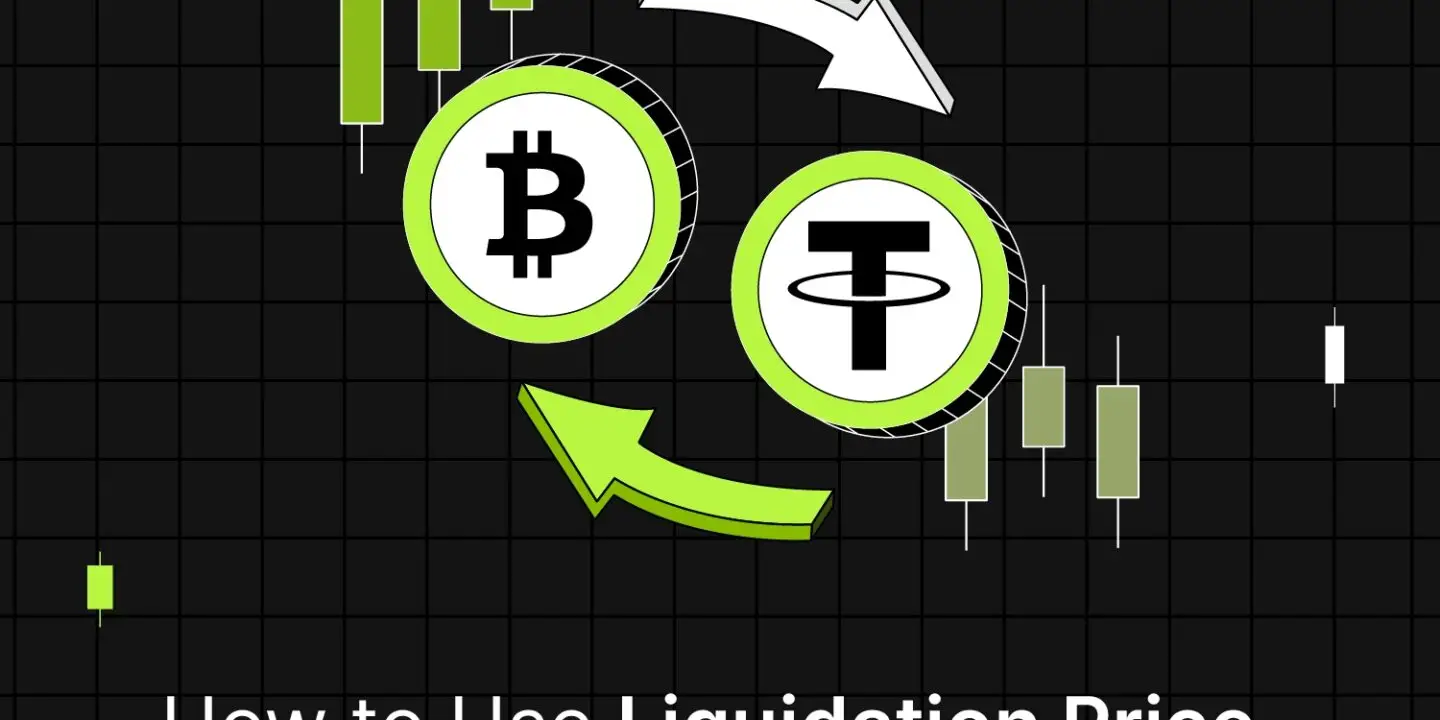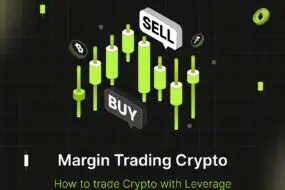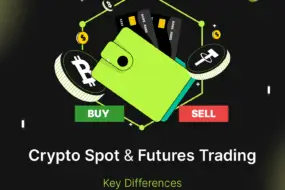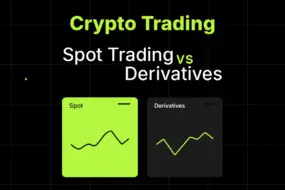
In leveraged crypto trading, one of the most important concepts to understand is the liquidation price. This is the price level at which your position will be forcibly closed by the exchange to protect borrowed funds. If you ignore liquidation levels, even a small market move can wipe out your position.
For traders on Bitunix and other exchanges, knowing how to calculate crypto futures liquidation price, how leverage impacts it, and how to use it in your strategy is key to risk management.
This guide breaks down:
- What liquidation price means in crypto trading
- The liquidation price formula with leverage and maintenance margin
- A worked example of how to calculate liquidation price
- Factors that affect liquidation risk
- Strategies to avoid forced liquidation
What Is the Liquidation Price in Crypto Trading?
The liquidation price in crypto trading is the price at which an exchange will automatically close a trader’s leveraged position because their account equity has fallen below the maintenance margin requirement (MMR).
In simple terms:
- Long positions are liquidated if price falls to liquidation price.
- Short positions are liquidated if price rises to liquidation price.
This protects the exchange from losses on borrowed funds and ensures fair risk management across the derivatives market.
How to Calculate Crypto Futures Liquidation Price
The exact liquidation price formula can vary by exchange, but the general calculation for a long position looks like this:
Liquidation Price (Long) = Entry Price × (1 – Initial Margin Ratio + Maintenance Margin Ratio)
For a short position:
Liquidation Price (Short) = Entry Price × (1 + Initial Margin Ratio – Maintenance Margin Ratio)
Where:
- Entry Price: The price at which you opened the position
- Initial Margin Ratio (IMR): The fraction of position size funded by your own capital (1 ÷ leverage)
- Maintenance Margin Ratio (MMR): The minimum margin required to keep the position open
Step-by-Step Liquidation Price Example
Scenario:
- You open a long BTC/USDT perpetual contract
- Entry Price = $50,000
- Leverage = 10x
- Position Size = $10,000 (using $1,000 margin)
- Maintenance Margin = 0.5%
Step 1. Calculate Initial Margin Ratio
IMR = 1 ÷ Leverage = 1 ÷ 10 = 0.10 (10%)
Step 2. Apply Formula
Liquidation Price = 50,000 × (1 – 0.10 + 0.005)
= 50,000 × (0.905)
= $45,250
If BTC falls to $45,250, your position will be liquidated.
Key Insight: Higher leverage means a smaller IMR, which pulls liquidation price closer to your entry point.
What Is the Liquidation Price Formula for Leverage and Maintenance Margin?
Here’s a simplified overview:
- Higher Leverage → Closer Liquidation Price
- Higher Maintenance Margin → Closer Liquidation Price
- Higher Initial Margin (more capital at risk) → Safer distance from liquidation
How Maintenance Margin Affects Liquidation Price
The maintenance margin is the minimum equity that must be kept in your account to hold an open position.
- If market moves against you and equity falls below maintenance margin, liquidation is triggered.
- Exchanges adjust MMR depending on volatility, asset type, and position size.
Example:
- Position size: $10,000
- Maintenance Margin = 0.5% = $50 If your equity falls below $50, your position will be liquidated.
Table: Effect of Leverage and Margin on Liquidation Price
Загрузка Sheets. Попробуйте еще раз после завершения.
Higher leverage pushes liquidation price closer to entry.
What Does Derivatives Liquidation Mean?
Derivatives liquidation refers to the forced closure of a futures or perpetual contract when margin requirements are no longer met. This process protects both the exchange and other traders from insolvency risk.
Bitunix, like other exchanges, uses auto-deleveraging (ADL) or insurance funds to cover remaining losses if liquidation cannot be fully executed at the liquidation price.
How Different Exchanges Set Liquidation Price
While the formula is similar across exchanges, differences exist:
- Bitunix: Uses entry price, margin, leverage, and MMR to calculate liquidation.
- Binance/OKX/Bybit: Apply similar formulas but adjust MMR tiers for larger positions.
- Low-liquidity platforms: May widen liquidation thresholds to reduce risk.
Always check the official Bitunix liquidation calculator or help docs, as margin policies can change.
How to Use Liquidation Price in a Trading Strategy
- Plan Entries with Liquidation in Mind
- Avoid entering trades where liquidation is only a small move away.
- Use lower leverage to keep liquidation at a safe distance.
- Set Stop-Loss Above Liquidation
- Always place a stop-loss order before liquidation price.
- This prevents worse losses if the exchange liquidates you at market.
- Adjust Position Size
- Use liquidation levels to size positions correctly.
- Example: If liquidation is too close, reduce leverage or increase margin.
- Diversify Trades
- Spread risk across assets instead of placing one oversized position near liquidation risk.
How to Avoid Forced Liquidation in Crypto Trading
- Use Lower Leverage
- Smaller leverage = safer distance to liquidation.
- Maintain Adequate Margin
- Keep extra balance in your account to avoid margin calls.
- Use Stop-Loss Orders
- Place them well before liquidation levels.
- Monitor Volatility
- In high-volatility markets, liquidation can be triggered quickly.
- Stay Updated on Exchange Policies
- Bitunix and other exchanges adjust margin rules—always review before trading.
Conclusion
The liquidation price is one of the most important numbers to track in leveraged crypto trading. It depends on your entry price, leverage, initial margin, and maintenance margin. Mismanaging it can lead to rapid liquidation and capital loss.
By understanding the liquidation price formula leverage maintenance margin, monitoring your risk, and setting stop-loss orders, you can use liquidation price as a strategic tool rather than a surprise threat.
Disclaimer: Liquidation price formulas and margin rules may vary by exchange and can change over time. Always check the official Bitunix documentation for the latest updates before trading.
FAQs
1. What is maintenance margin in crypto trading?
Maintenance margin is the minimum equity required to keep a futures position open. If your account balance drops below it, liquidation occurs.
2. What is MMR in futures trading?
MMR stands for Maintenance Margin Requirement. It defines the percentage of a position’s value that must be maintained as collateral.
3. What is MMR in trading in general?
In any leveraged market (crypto, stocks, commodities), MMR is the ongoing margin that prevents positions from being liquidated prematurely.
4. What is the difference between initial margin and maintenance margin?
- Initial Margin: Required to open a position.
- Maintenance Margin: Minimum needed to keep the position open.
5. How are margin calls automated in crypto?
When your equity falls below MMR, the exchange automatically triggers liquidation. This process is handled by exchange risk engines and requires no manual intervention.
6. What is crypto derivatives margin?
Crypto derivatives margin refers to collateral (usually USDT or crypto) required to trade futures or perpetual contracts.
7. What is the difference between crypto margin and crypto futures?
- Margin Trading: Borrowing funds to buy or sell assets in spot markets.
- Futures Trading: Contracts that speculate on future prices, often using margin.
8. How does leverage affect liquidation price?
Higher leverage reduces the initial margin ratio, pulling liquidation price closer to the entry price and increasing liquidation risk.
9. How to avoid margin calls in crypto trading?
- Use moderate leverage.
- Keep additional margin balance.
- Place stop-loss orders before liquidation levels.
- Diversify positions.
About Bitunix
Bitunix is one of the world’s fastest growing professional derivatives exchanges, trusted by over 3 million users across more than one hundred countries. Ranked among the top exchanges on major data aggregators, Bitunix processes billions in daily volume and offers a comprehensive suite of products including perpetual futures with high leverage, spot markets, and copy trading. Users can trade bitcoin and other major cryptocurrencies on the platform, taking advantage of advanced trading features. Known for its Ultra K line trading experience and responsive support, Bitunix provides a secure, transparent, and rewarding environment for both professional and everyday traders. Bitunix Academy adds structured lessons so you can build skills while you trade.
Bitunix Global Accounts
X | Telegram Announcements | Telegram Global | CoinMarketCap | Instagram | Facebook | LinkedIn | Reddit | Medium
Disclaimer: Trading digital assets involves risk and may result in the loss of capital. Always do your own research. Terms, conditions, and regional restrictions may apply.












One reply on “How to Use Liquidation Price For Better Trading Strategy?”
Great breakdownBlog comment creation of how liquidation price ties directly into risk management for leveraged traders. I especially liked the explanation of how maintenance margin shifts the liquidation threshold — that’s something newer traders often overlook. It might also help to emphasize how adjusting position size alongside leverage can further reduce liquidation risk in volatile markets.